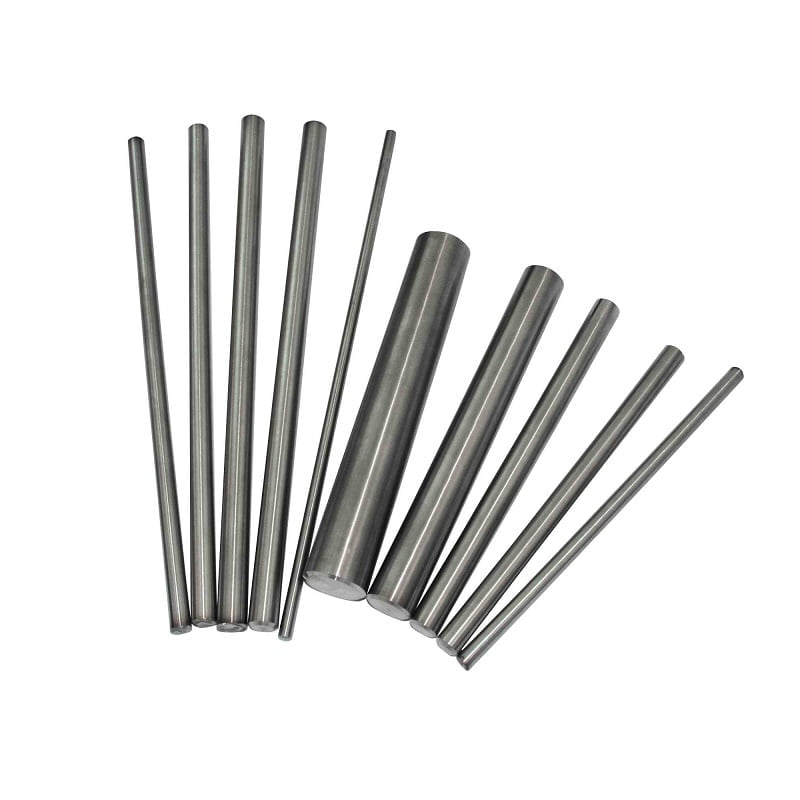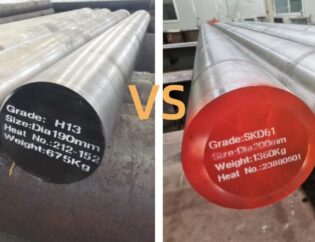
Steel remains one of the most versatile and widely used materials in engineering and manufacturing applications due to its strength, durability, and adaptability. Among the numerous grades available, 12L14 và 1045 are two notable types that serve different needs. This document provides a comprehensive comparison of these two steels, exploring their chemical compositions, mechanical properties, applications, heat treatment capabilities, weldability, costs, and more.
Overview of 12L14 Steel
12L14 is a low-carbon steel known for its exceptional machinability, primarily due to its specific alloying elements, including lead and sulfur. The grade is typically used in applications where precision machining is essential, making it a favorite among engineers and machinists.
Chemical Composition of 12L14
The chemical composition of 12L14 steel is crucial for understanding its properties and behavior during processing. The typical composition is as follows:
| Yếu tố | Thành phần (%) |
|---|---|
| Cacbon (C) | ~0.12% |
| Mangan (Mn) | ~0.60% |
| Phốt pho (P) | ~0.04% |
| Lưu huỳnh (S) | ~0.26% |
| Lead (Pb) | ~0.15% |
The presence of lead acts as a machining aid by improving chip formation and reducing tool wear.
Mechanical Properties of 12L14
The mechanical properties of 12L14 steel make it suitable for various applications. Some key properties are:
| Tài sản | Giá trị |
|---|---|
| Sức căng | 58,000 – 75,000 psi |
| Sức mạnh năng suất | Approximately 38,000 psi |
| Độ cứng | Approximately 85 HRB |
| Khả năng gia công | Xuất sắc |
The low carbon content provides sufficient strength for many low-stress applications while allowing for easy machining.
Applications of 12L14 Steel
Due to its machinability, 12L14 is commonly used in applications requiring high precision. Some common applications include:
| Application Type | Sự miêu tả |
|---|---|
| Bộ phận gia công chính xác | Used in components that require tight tolerances, such as shafts and fittings. |
| Chốt | Utilized for bolts, screws, and similar fasteners due to cost-effectiveness and ease of machining. |
| Bánh răng | Commonly used for low-load gears in various machinery. |
| Hydraulic Components | Ideal for hydraulic fittings where consistent tolerances are necessary. |
Overview of 1045 Steel
1045 is a medium-carbon steel that provides higher strength and hardness compared to 12L14. This steel grade is well-suited for general-purpose applications and benefits from heat treatment processes that further enhance its properties.
Chemical Composition of 1045
The chemical composition of 1045 steel is more focused on achieving higher strength and hardness. The composition typically includes:
| Yếu tố | Thành phần (%) |
|---|---|
| Cacbon (C) | ~ 0,45% |
| Mangan (Mn) | 0.60 – 0.90% |
| Phốt pho (P) | ≤0.04% |
| Lưu huỳnh (S) | ≤0.05% |
The higher carbon content significantly increases the material’s hardness and tensile strength.
Mechanical Properties of 1045
The mechanical properties of 1045 steel are as follows:
| Tài sản | Giá trị |
|---|---|
| Sức căng | 85,000 – 100,000 psi |
| Sức mạnh năng suất | Approximately 65,000 psi |
| Độ cứng | Approximately 90 HRB or higher |
| Khả năng gia công | Vừa phải |
With increased carbon and manganese, 1045 exhibits better performance under stress and improved wear resistance than 12L14.
Applications of 1045 Steel
1045 steel is suitable for a range of applications due to its desirable mechanical properties. Common applications include:
| Application Type | Sự miêu tả |
|---|---|
| Trục | Used in power transmission shafts requiring good strength and torsional resistance. |
| Bánh răng | Effective for high-torque gears, often subjected to heat treatment for increased durability. |
| Crankshafts | Commonly used in automotive applications where strength and toughness are critical. |
| Heavy-duty Fasteners | Ideal for applications demanding high tensile strength. |
Comparison of Machinability
Machinability is a critical factor that often influences the choice between 12L14 and 1045 steel.
| Tính năng | Thép 12L14 | 1045 Steel |
|---|---|---|
| Ease of Machining | Excellent due to lead content; allows for faster cutting speeds and reduced tool wear. | Moderate; machining can be challenging, especially in heat-treated conditions. Requires sharper tools and precise techniques. |
The lead added to 12L14 helps produce smoother cut surfaces and prolongs tool life, while 1045 requires more care during machining.
Heat Treatment Capabilities
Heat treatment processes enable both 12L14 and 1045 to achieve desired mechanical properties; however, their heat treatment responses differ significantly.
| Tính năng | Thép 12L14 | 1045 Steel |
|---|---|---|
| Xử lý nhiệt | Generally not heat-treated; used in the as-rolled condition, which suffices for low-stress applications. | Can undergo heat treatments such as quenching and tempering to improve hardness and tensile strength substantially. |
1045’s ability to be heat-treated makes it a versatile choice for demanding applications, while 12L14 maintains its properties in its original condition.
Khả năng hàn
Weldability is another significant factor to consider when choosing between these two materials.
| Tính năng | Thép 12L14 | 1045 Steel |
|---|---|---|
| Đặc điểm hàn | Not recommended for welding due to the lead content, which can lead to poor weld integrity. | Can be welded with care; preheating may be necessary to avoid cracking due to medium carbon content. Suitable filler materials are essential for strong welds. |
The lack of weldability in 12L14 often necessitates design changes to avoid welding altogether.
Cost and Availability
Cost and availability often play a crucial role in material selection.
| Tính năng | Thép 12L14 | 1045 Steel |
|---|---|---|
| Tốc độ dao động từ bảy mảnh mỗi phút đối với máy âm lượng thấp đến | Typically more expensive than regular low-carbon steels due to alloying elements, but savings may arise from machining efficiency. | Generally less expensive and widely available; a popular choice for various applications due to its versatile properties. |
1045’s availability in multiple forms (bars, plates, sheets) often makes it the more economical choice for large-scale applications.
Summary and Conclusion
In conclusion, the choice between 12L14 and 1045 steel will ultimately depend on specific project requirements.
| Tính năng | Thép 12L14 | 1045 Steel |
|---|---|---|
| Primary Attributes | Excellent machinability, low carbon content | Higher strength, versatility in heat treatment |
| Thành phần hóa học | Low carbon; lead improves machining | Medium carbon; enhances hardness & strength |
| Tính chất cơ học | Moderate tensile and yield strength | Higher tensile strength and hardness |
| Các ứng dụng | Precision parts, fasteners, hydraulic components | Shafts, gears, automotive components |
| Khả năng gia công | Superior due to lead content | Moderate, better with appropriate tooling |
| Xử lý nhiệt | Not typically heat-treated | Heat-treatable for improved properties |
| Khả năng hàn | Not suitable for welding | Can be welded with proper techniques |
| Cost and Availability | Higher cost, specialized machining materials | More economical, widely available |
By understanding the differences between these two steel grades, manufacturers can make informed decisions that align with their project specifications and performance requirements. If there are any more specific topics or further clarifications needed regarding 12L14 and 1045 steel, feel free to ask!

